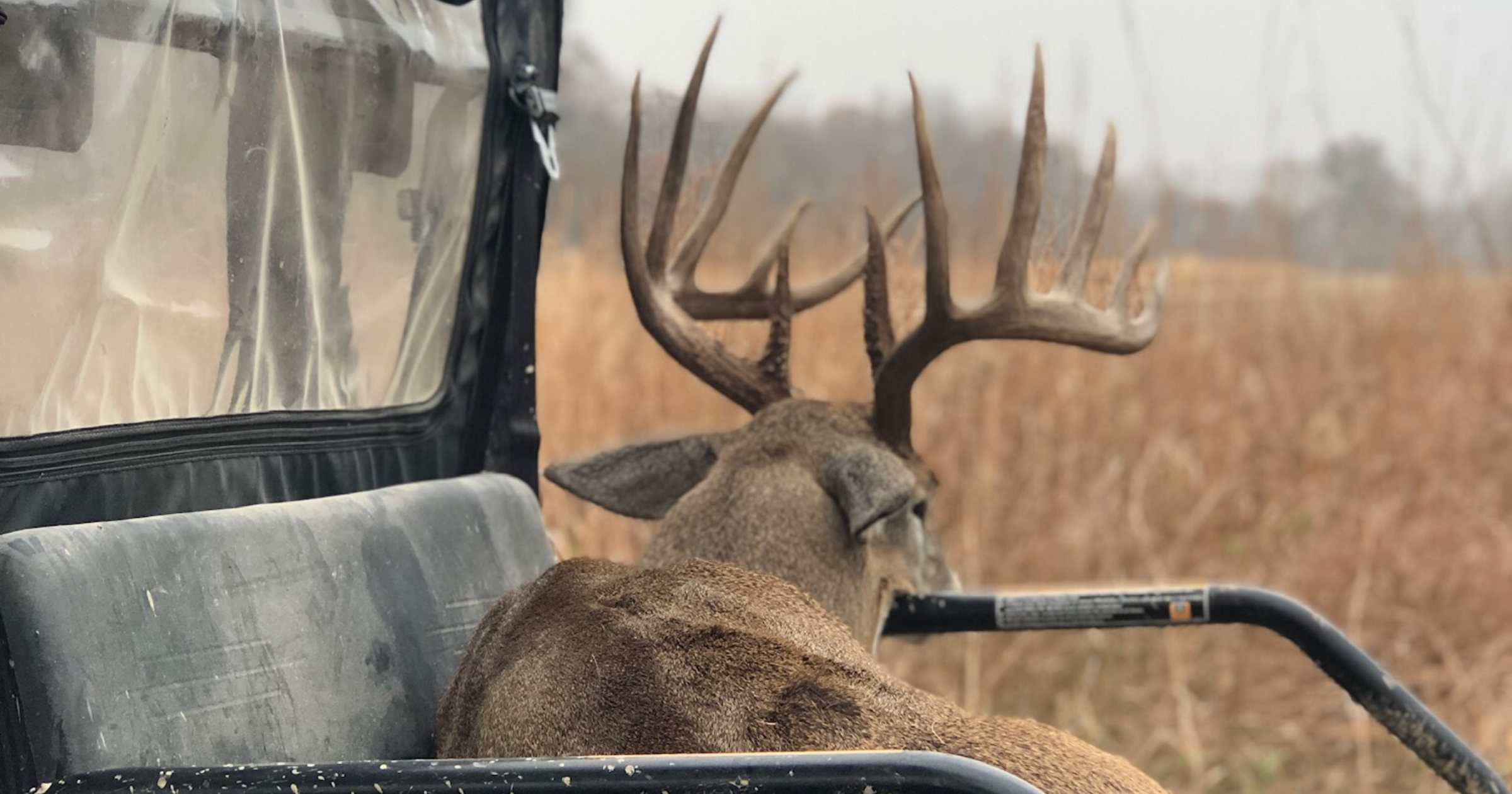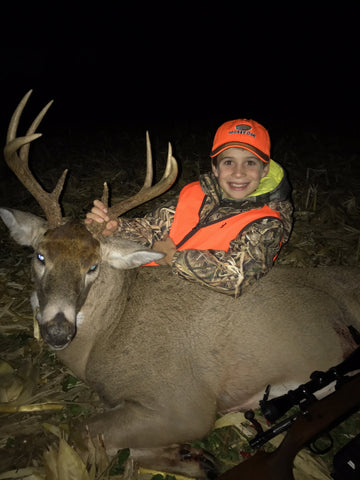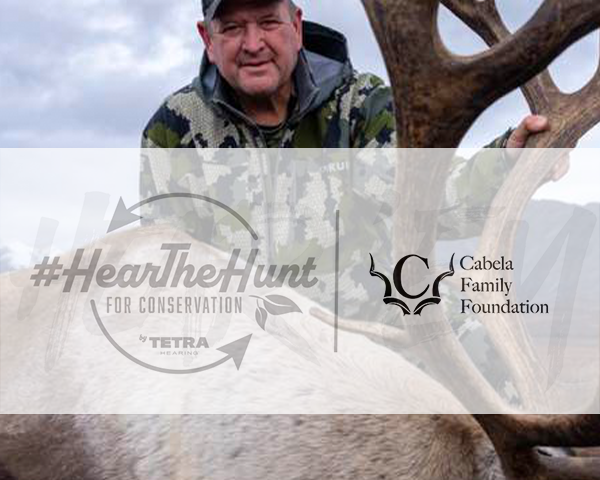4 Key Sounds Deer Hunters Must Hear

I’ll never forget my first sit in a box blind. It was mid-November and the blind sat over-looking a clover field at the intersection of three big wooded ridges. It was a perfect rut-hunting scenario. My friend, Darren, dropped me off long before daylight. I closed the door, situated my gear, and looked out into the blackness.
It was so quiet.
I could hear nothing but my heartbeat and my ears ringing. As the woods woke up that morning, the quiet didn’t change much. The well-insulated blind did its job of keeping my heat, scent, and sound inside, but it also kept sound out. I hated it! While I can concede the advantages of hunting from a blind, for a guy who spent his whole life listening for deer from a tree stand...
the silence was deafening.
For most deer hunters, hearing the sounds of the woods is not only a big part of the enjoyment of the hunt, but also can be critical to success. As a hearing doctor, I have listened to many deer hunters stories of missed opportunities because their hearing wasn’t as good as it once was. Here are four reasons better hearing can make for more enjoyable and more successful hunt.

1. Hearing the signs
An angry squirrel barking or a blue jay sounding the alarm can often alert the hunter to an approaching deer. An experienced woodsman is always listening for changes in the sounds of the woods as other animals will often sound off when startled or angered by the presence of deer. Crows, hawks, chickadees, even turkeys will vocalize when disturbed. Hunters hearing those signs can focus their attention directionally to find that deer more quickly, or even see one that might have otherwise slipped by unnoticed.
2. Hearing the movement
Leaves rustling or an animal walking through leaves creates a predominately high-frequency sound. Due to a lifetime of noise exposure, we lose the ability to hear high-frequency sounds. If you sometimes don’t hear your cell phone ring, the beeping of an alarm, or the clicking of your turn signal, you probably have lost some high-frequency hearing. Missing out on high-pitched sounds also makes voices less clear and makes it harder to hear in background noise.
In the woods, detecting the high-frequency sounds of deer movement can be critical. From hearing a doe and fawn quietly walking behind your stand, to detecting the sound of a buck trotting during the rut, knowing that deer is there or coming, can have the hunter prepared and better positioned for a shot. Even when an animal may not be a “shooter,” knowing a deer is close is very important. Unfortunately, I’ve been busted more than once moving around in the stand, because I didn’t realize a deer had slipped in behind me.
Hearing movement is even more critical during early season when the trees still have most of their leaves, or in very thick areas. When visibility is limited, a deer can be in range and the only signal be the quiet, high-pitched sounds of movement.

3. Localizing direction
Our ability to locate where a sound is coming from is a complex auditory process. When we hear a sound, the brain compares the volume of that signal in the right and left ears and gives us a location based on the difference in level between ears. Directional hearing is also aided by the shape and physical characteristics of our outer ears. The sound gathering capabilities of our external ears give us cues to where sounds come from.
As hunters, our hearing ability, or sometimes lack thereof, greatly affects how we determine sound location. In order to tell the direction of a sound, we first must hear it.
If we can’t hear the high-pitched sounds of movement, telling direction is impossible.
Another problem is asymmetrical hearing. Any amount of shooting without hearing protection, as well as working around equipment or using loud hand tools, can affect the balance in hearing between our ears. A right-handed shooter gets more noise exposure in the left ear due to closer proximity to the muzzle and the head shadow effect. When our hearing is not symmetrical, it is much harder to locate the source of a sound.
In a hunting scenario, it’s obviously important to be able to detect and quickly locate a sound in the woods. Better hearing and more symmetrical hearing aids in our localization ability.
4. Communication
If you hunt with a partner, spouse, child or grandchild, hearing soft speech or whispers can be vital to fun, safety and success when hunting. When my now 16-year-old son was nine, we were on a youth hunt in October. A young buck came in and, trying to be the good father, I put his earplugs in before I let him shoot. The buck was about 25 yards walking directly away from us when I whispered, “Don’t shoot.” The .243 immediately barked. I looked at him with my best furrowed-brow-dad-look. He said, “I though you said ‘shoot.’” Luckily, he missed from that bad angle and the dumb young deer walked about 15 yards and turned broadside. The second shot dropped him.

Hearing quiet voices also depends on having good hearing. Whispers are almost exclusively high-pitched, so any degree of hearing loss makes whispers very hard to understand.
Get your edge back.
TETRA Hearing™’s Deer AmpPods give you an edge in the woods, or even give your edge back. We designed AmpPods to specifically boost the high-frequency sounds of deer movement and soft speech to help detect, locate, and communicate during the hunt. AmpPods microphone is placed in the hunter’s ear canal. This makes localization far superior to products that have microphones on top of the ear or outside muff-style devices. If you have more hearing loss in one ear than other, we can even compensate for that in our AmpPods 90-series with custom programming for your personalized hearing profile to further improve your ability to tell direction. And when it comes time for the shot, AmpPods, immediately shut off, suppressing the sound of the gun.
Want to see more deer, spook less, and have better shot opportunities? Better hearing with AmpPods will help!
1 comment



Which ear pods are the best for both waterfowling and deer hunting? Thanks.